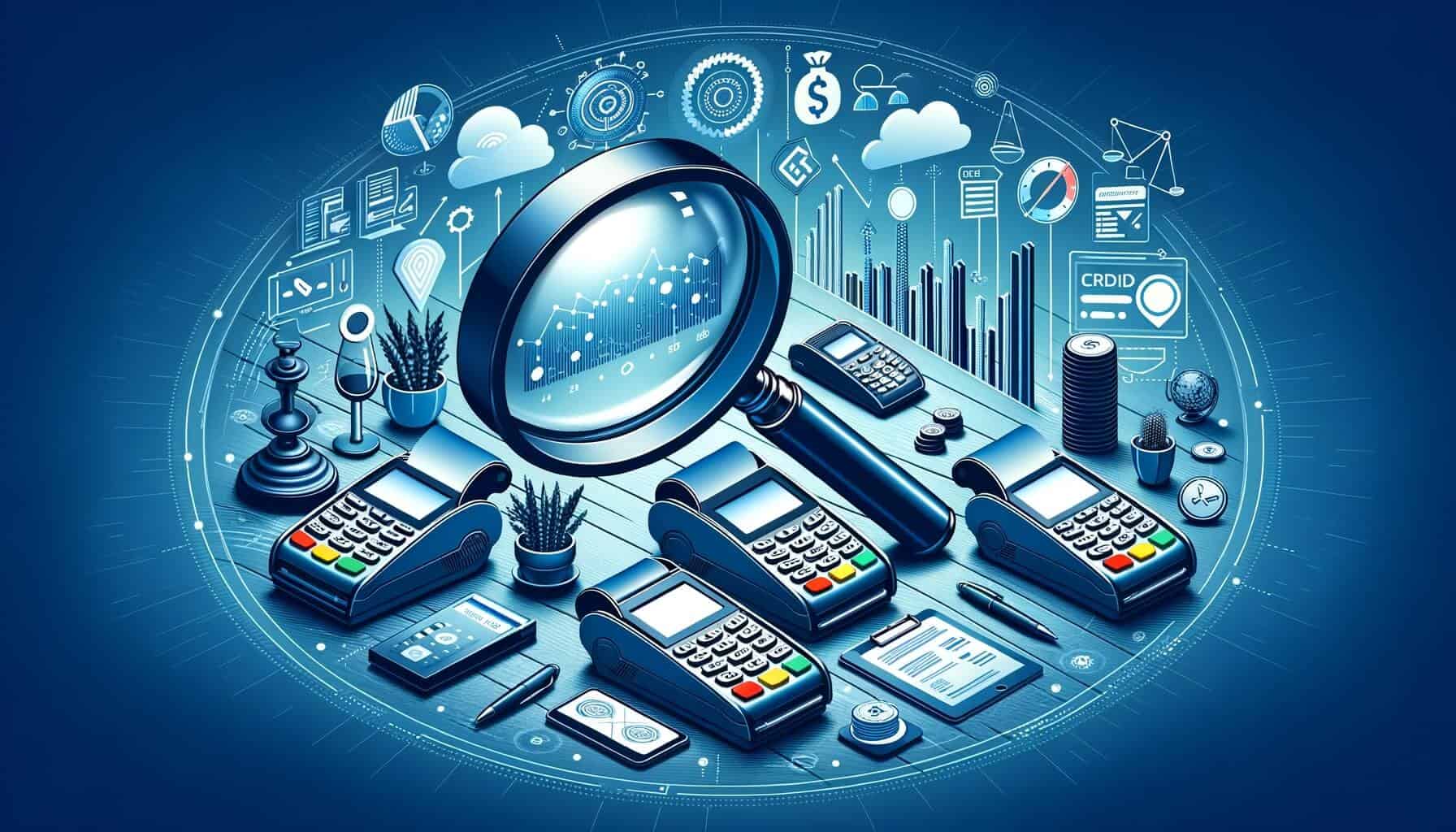
By Catharine Proctor April 28, 2025
In today’s digital age, credit card payments have become the norm for businesses of all sizes. Whether you run a small retail store or a large e-commerce platform, having the right credit card processing equipment is crucial for smooth and secure transactions. With numerous options available in the market, selecting the right equipment can be a daunting task.
This comprehensive guide will walk you through the factors to consider, types of equipment available, security features, cost and pricing structure, compatibility and integration, brand and model comparisons, tips for negotiation, and common FAQs to help you make an informed decision.
Factors to Consider When Choosing Credit Card Processing Equipment
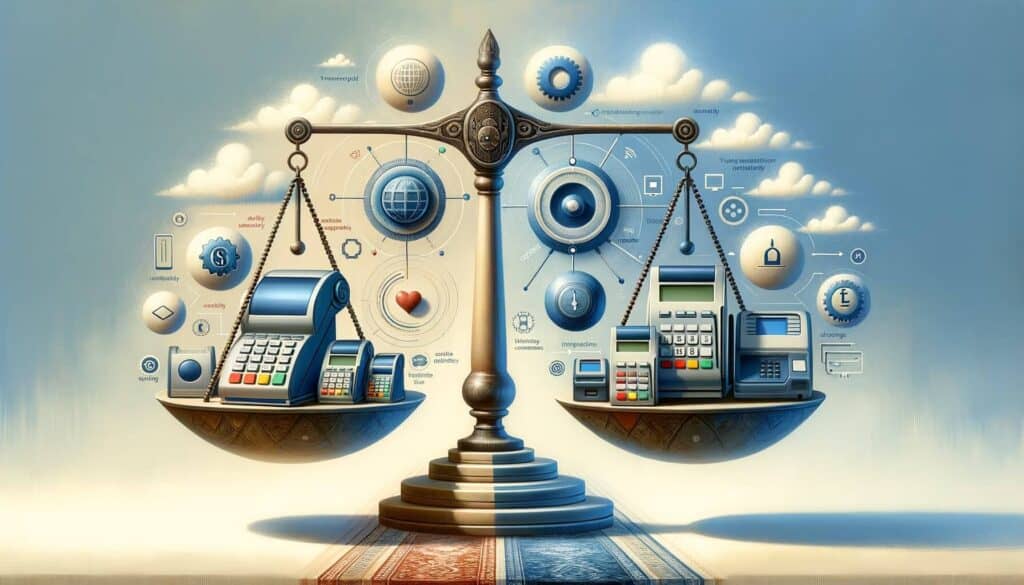
1. Business Type and Needs: The first step in selecting the right credit card processing equipment is to understand your business type and needs. Are you a brick-and-mortar store, an online business, or a mobile vendor? Each business type requires different equipment to cater to their specific needs.
2. Payment Methods: Consider the payment methods you want to accept. Apart from credit and debit cards, do you want to accept mobile payments, contactless payments, or even cryptocurrency? Ensure that the equipment you choose supports the payment methods you want to offer.
3. Volume of Transactions: Evaluate the volume of transactions your business handles on a daily basis. If you have a high volume of transactions, you may need equipment that can handle a large number of transactions without slowing down or crashing.
4. Scalability: Consider the future growth of your business. Will the equipment you choose be able to handle increased transaction volumes as your business expands? It is important to select equipment that can scale with your business to avoid the need for frequent upgrades.
5. User-Friendliness: Ease of use is crucial for both you and your customers. Look for equipment that has a user-friendly interface, intuitive navigation, and clear instructions. This will ensure a smooth payment experience for your customers and minimize training time for your staff.
6. Customer Support: Check the availability and quality of customer support provided by the equipment provider. In case of any technical issues or questions, it is important to have reliable customer support to assist you promptly.
7. Durability and Reliability: Consider the durability and reliability of the equipment. It should be able to withstand the daily wear and tear of your business environment. Look for equipment with a good track record and positive reviews regarding its reliability.
8. Integration with POS Systems: If you already have a point-of-sale (POS) system in place, ensure that the credit card processing equipment you choose is compatible and can seamlessly integrate with your existing system. This will help streamline your operations and avoid any compatibility issues.
9. Compliance with Security Standards: Security is of utmost importance when it comes to credit card processing. Ensure that the equipment you choose complies with the Payment Card Industry Data Security Standard (PCI DSS) to protect your customers’ sensitive information.
10. Cost: Finally, consider the cost of the equipment, including any upfront fees, monthly fees, transaction fees, and potential hidden costs. Compare the pricing structures of different providers to find the most cost-effective option for your business.
Types of Credit Card Processing Equipment Available in the Market
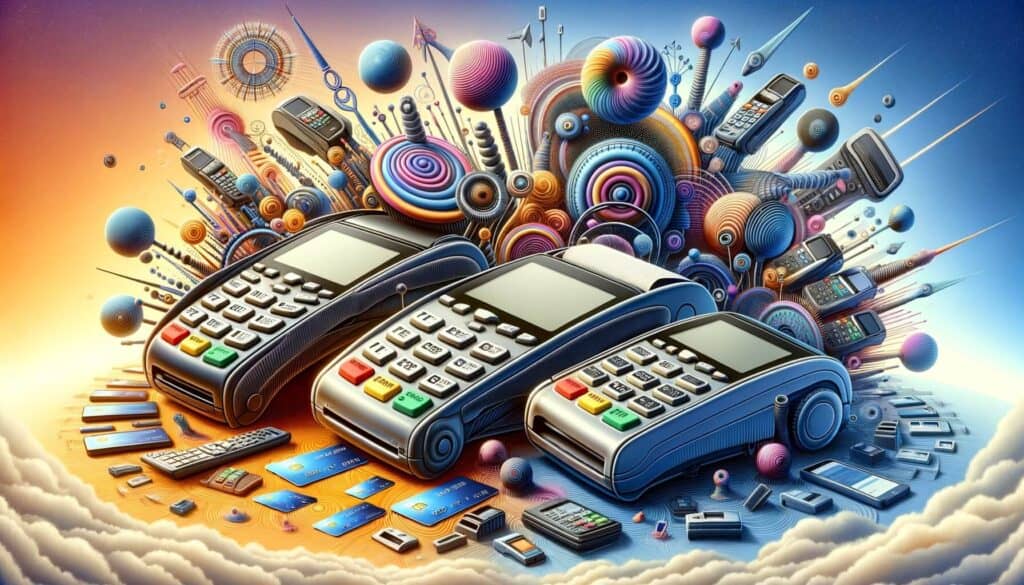
1. Traditional Credit Card Terminals: Traditional credit card terminals are the most common type of equipment used by brick-and-mortar businesses. These terminals are standalone devices that connect to a phone line or internet connection to process credit card payments. They usually have a keypad for entering payment information and a receipt printer.
2. Mobile Credit Card Readers: Mobile credit card readers are ideal for businesses that operate on the go, such as food trucks or delivery services. These small devices can be attached to a smartphone or tablet and use a mobile app to process payments. They are portable, easy to use, and can accept payments anywhere with an internet connection.
3. Point-of-Sale (POS) Systems: POS systems are comprehensive solutions that combine credit card processing with other business functions, such as inventory management and sales reporting. They consist of a touchscreen terminal, cash register, barcode scanner, receipt printer, and other peripherals. POS systems are suitable for businesses with high transaction volumes and complex operations.
4. Virtual Terminals: Virtual terminals are web-based applications that allow businesses to process credit card payments through a computer or laptop. They are typically used for mail or phone orders, where the customer’s card information is manually entered into the system. Virtual terminals are convenient for businesses that do not have a physical location or need to process payments remotely.
5. Payment Gateways: Payment gateways are online platforms that enable businesses to accept credit card payments on their websites or mobile apps. They securely transmit payment information between the customer, the merchant, and the payment processor. Payment gateways are essential for e-commerce businesses and can be integrated with various shopping cart platforms.
Evaluating the Security Features of Credit Card Processing Equipment
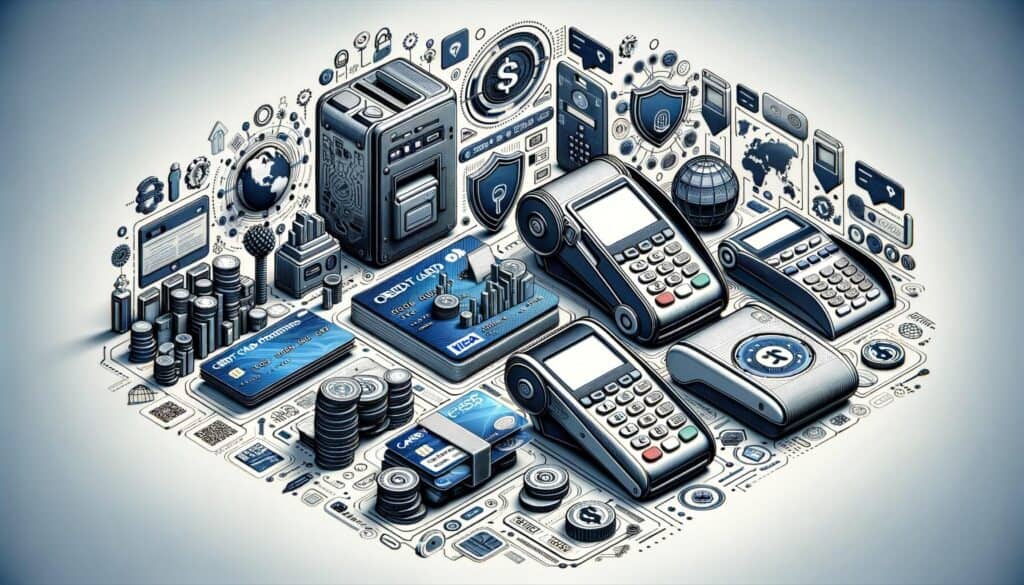
1. Encryption: Encryption is a crucial security feature that protects sensitive cardholder data during transmission. Look for equipment that supports end-to-end encryption, which ensures that the data is encrypted from the moment it is entered until it reaches the payment processor.
2. Tokenization: Tokenization replaces sensitive cardholder data with a unique identifier called a token. This ensures that even if the token is intercepted, it cannot be used to retrieve the original card data. Choose equipment that supports tokenization to enhance the security of your transactions.
3. EMV Chip Technology: EMV chip technology provides an added layer of security by generating a unique code for each transaction. This makes it difficult for fraudsters to clone or counterfeit credit cards. Ensure that the equipment you choose supports EMV chip technology to protect your business from liability in case of fraudulent transactions.
4. PCI DSS Compliance: The Payment Card Industry Data Security Standard (PCI DSS) is a set of security standards that all businesses accepting credit card payments must comply with. Check if the equipment you choose is PCI DSS compliant to ensure that your customers’ data is protected.
5. Fraud Detection and Prevention: Look for equipment that offers advanced fraud detection and prevention features, such as real-time transaction monitoring, velocity checks, and address verification. These features help identify and prevent fraudulent transactions, protecting both your business and your customers.
Understanding the Cost and Pricing Structure of Credit Card Processing Equipment
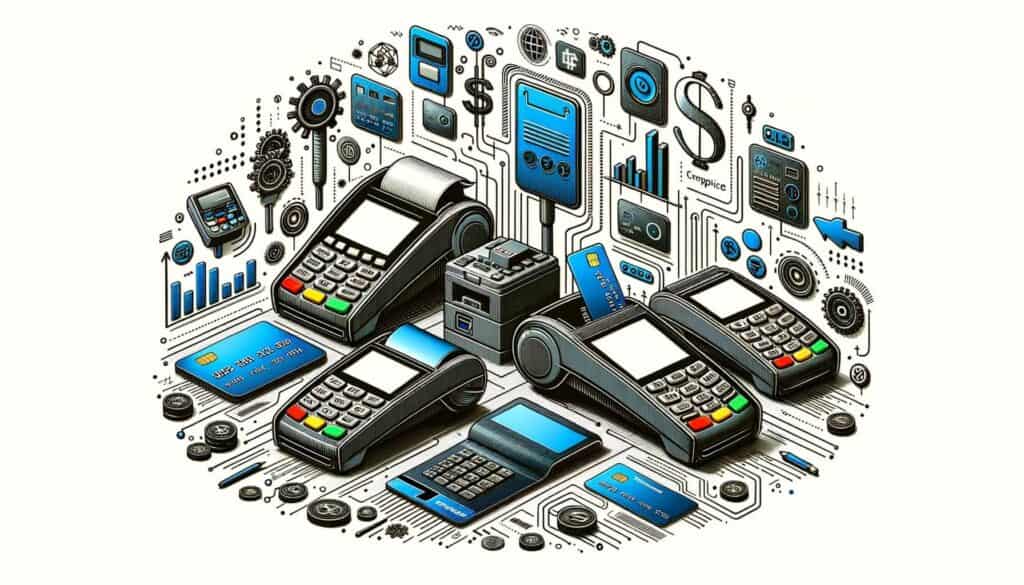
1. Upfront Costs: Some credit card processing equipment may require an upfront investment. This can include the cost of purchasing the equipment itself, installation fees, and any necessary peripherals. Consider your budget and cash flow to determine if you can afford the upfront costs.
2. Monthly Fees: Many equipment providers charge monthly fees for their services. These fees can vary depending on the type of equipment and the features included. Common monthly fees include equipment rental fees, software licensing fees, and maintenance fees. Compare the monthly fees of different providers to find the most cost-effective option.
3. Transaction Fees: Transaction fees are charged for each credit card transaction processed through the equipment. These fees are usually a percentage of the transaction amount or a flat fee per transaction. Consider the transaction volume of your business to estimate the impact of transaction fees on your overall costs.
4. Hidden Costs: Be aware of any potential hidden costs associated with the equipment. These can include additional fees for technical support, software updates, PCI compliance, or early termination fees. Read the terms and conditions carefully and ask the provider about any potential hidden costs before making a decision.
5. Pricing Models: Different providers may offer different pricing models, such as interchange-plus pricing or tiered pricing. Interchange-plus pricing provides transparency by separating the interchange fees charged by the card networks from the provider’s markup. Tiered pricing bundles different types of transactions into tiers with different rates. Compare the pricing models to determine which one is most suitable for your business.
Assessing the Compatibility and Integration of Credit Card Processing Equipment with Your Business Systems
1. Point-of-Sale (POS) Integration: If you already have a POS system in place, ensure that the credit card processing equipment you choose can seamlessly integrate with it. Integration allows for automatic synchronization of sales data, inventory management, and reporting, saving you time and effort.
2. E-commerce Integration: If you operate an online business, it is important to choose credit card processing equipment that can integrate with your e-commerce platform or payment gateway. This integration ensures a smooth and secure payment experience for your online customers.
3. Accounting Software Integration: Consider whether the credit card processing equipment can integrate with your accounting software. Integration with accounting software allows for automatic reconciliation of transactions, simplifying your financial management processes.
4. Inventory Management Integration: If you have inventory management software, check if the credit card processing equipment can integrate with it. Integration with inventory management software enables real-time updates of stock levels and automatic deduction of sold items from your inventory.
5. Customer Relationship Management (CRM) Integration: If you use a CRM system to manage customer data, look for credit card processing equipment that can integrate with it. Integration with CRM systems allows for better customer insights, personalized marketing campaigns, and improved customer service.
Comparing Different Brands and Models of Credit Card Processing Equipment
1. Research and Reviews: Conduct thorough research and read reviews about different brands and models of credit card processing equipment. Look for reputable brands with positive customer feedback and high ratings for reliability, security, and customer support.
2. Features and Functionality: Compare the features and functionality offered by different brands and models. Consider the specific needs of your business and prioritize the features that are most important to you. Look for equipment that offers a good balance between functionality and ease of use.
3. Scalability: Consider the scalability of the equipment. Will it be able to handle increased transaction volumes as your business grows? Look for equipment that can accommodate your future needs without requiring frequent upgrades or replacements.
4. Durability and Reliability: Assess the durability and reliability of the equipment. Look for brands and models with a proven track record of reliability and positive customer reviews regarding their durability. Equipment that is built to last will save you money in the long run.
5. User-Friendliness: Ease of use is crucial for both you and your staff. Look for equipment with a user-friendly interface, intuitive navigation, and clear instructions. Consider the training time required for your staff to become proficient in using the equipment.
6. Warranty and Support: Check the warranty and support offered by the equipment provider. A longer warranty period indicates the manufacturer’s confidence in the quality of their product. Additionally, ensure that the provider offers reliable customer support to assist you in case of any technical issues or questions.
Tips for Negotiating the Best Deal on Credit Card Processing Equipment
1. Compare Multiple Providers: Obtain quotes from multiple credit card processing equipment providers to compare their pricing and terms. This will give you leverage during negotiations and help you find the best deal for your business.
2. Understand the Pricing Structure: Familiarize yourself with the pricing structure of credit card processing equipment, including upfront costs, monthly fees, and transaction fees. This knowledge will enable you to negotiate from an informed position and avoid any hidden costs.
3. Leverage Your Business Volume: If your business has a high volume of transactions, use it as leverage during negotiations. Providers may be willing to offer discounted rates or waive certain fees to secure your business.
4. Request Customized Solutions: If you have specific requirements or unique business needs, ask the provider if they can offer customized solutions. Tailored solutions may come with additional costs, but they can provide the exact features and functionality you need.
5. Negotiate Contract Terms: Negotiate the terms of the contract, including the length of the agreement, termination fees, and any potential rate increases. Be prepared to walk away if the terms are not favorable to your business.
6. Seek Competitive Bids: Consider seeking competitive bids from different providers. This can create a competitive environment and encourage providers to offer better pricing and terms to win your business.
7. Consider Long-Term Relationships: Building a long-term relationship with a credit card processing equipment provider can have its benefits. Providers may be more willing to offer favorable terms and discounts to loyal customers.
8. Consult with Industry Experts: If negotiating is not your strong suit, consider consulting with industry experts or hiring a consultant to assist you. They can provide valuable insights and negotiate on your behalf to secure the best deal.
Common FAQs about Selecting Credit Card Processing Equipment
Q1. What is the difference between a traditional credit card terminal and a mobile credit card reader?
A1. A traditional credit card terminal is a standalone device that connects to a phone line or internet connection, while a mobile credit card reader attaches to a smartphone or tablet. Traditional terminals are suitable for brick-and-mortar businesses, while mobile readers are ideal for businesses on the go.
Q2. How do I know if the credit card processing equipment is PCI DSS compliant?
A2. Look for the PCI DSS compliance logo or certification on the equipment or the provider’s website. Additionally, you can contact the provider and ask for documentation or proof of compliance.
Q3. Can I use my existing POS system with a different credit card processing equipment?
A3. It depends on the compatibility and integration capabilities of both your POS system and the new credit card processing equipment. Consult with the provider or your POS system vendor to determine if they can work together.
Q4. What are the advantages of using a payment gateway for online payments?
A4. Payment gateways provide a secure platform for processing online payments, ensuring the protection of sensitive customer data. They also offer features such as fraud detection, recurring billing, and integration with various e-commerce platforms.
Q5. How can I estimate the impact of transaction fees on my business?
A5. Calculate the average transaction value and multiply it by the transaction fee percentage or flat fee. Multiply this amount by the number of transactions you expect to process in a given period to estimate the total transaction fees.
Conclusion
Selecting the right credit card processing equipment is crucial for the success of your business. By considering factors such as your business type and needs, payment methods, volume of transactions, scalability, user-friendliness, customer support, durability, compatibility, security features, cost, and integration, you can make an informed decision.
Compare different brands and models, negotiate the best deal, and ensure compliance with security standards. By following these guidelines and understanding the common FAQs, you can confidently choose the right credit card processing equipment that meets your business requirements and enhances the payment experience for your customers.